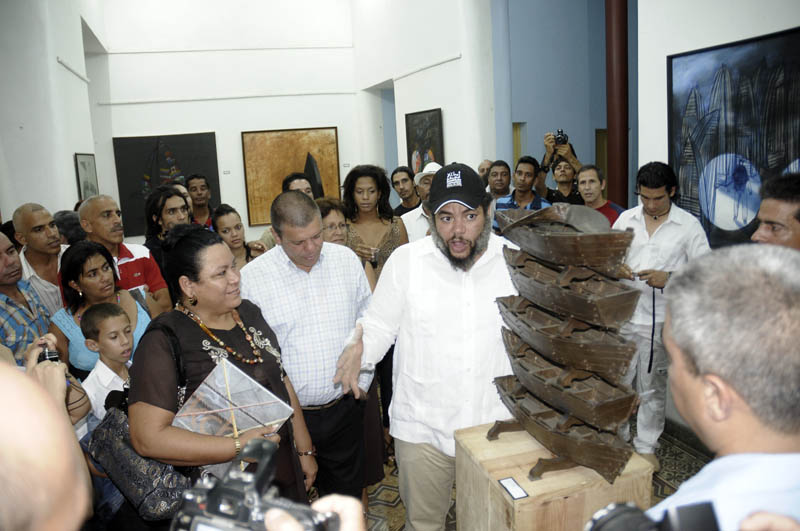
The party to celebrate the 500 anniversary of the second village founded by the Spaniards in Cuba is not only for the people from Bayamo. It is for all the Cubans, because the most transcendental thing is the contribution of symbols this place has given to the history of Cuba.
There were several activities in the village for the celebration, among them highlights the Crisol de 200 soles gala (Melting pot of 500 Suns Gala) on November 4, and the solemn ceremony of the Municipal Assembly of the People’s Power on November 5.
Besides the delegates, there were also present Miguel Diaz-Canel first vice minister of the Councils of State and Ministers, Salvador Valdes Mesa, member of the Political Bureau of the Communist Party of Cuba (PCC), Commander of the Revolution Guillermo Garcia; the first secretary of the PCC in Granma province and member of the Central Committee of the PCC, Sonia Virgen Perez Mojena and other leaders of the country and the region.
The session at Bayamo Theater was marked by mysticism with two pieces of great patrimonial value: Carlos Manuel de Cespedes’ ceremonial sable and the remains of a joist rescued from the rubbles of the arson by the inhabitants of that city in 1869, when they preferred to reduce the village to ashes instead of giving it back to the Spanish power.
The performances of the Professional Choir from Bayamo and the Provincial Band from Granma were full of symbolism with the interpretation of different versions of the National Anthem.
Eusebio Leal, Historian of Havana and president of the National Commission of Monuments addressed the audience. In his speech he talked about the cultural shock the conquest represented and the torture of the Dominican cacique Hatuey captured and burnt alive in that piece of land: “Since then, the legend of Yara’s light flies over the zone, a light for welfare, promises, hopes,” he said.
Few minutes before Leal’s speech, six personalities were handed in the commemorative medal 500 Anniversary, established by the Municipal Assembly of the People’s Power for this celebration. The first one was for Commander of the Revolution Guillermo Garcia, first farmer who joined the Rebel Army. He was followed by Lazaro Esposito, member of the Central Committee and first secretary of the PCC in Santiago de Cuba, who used to be in the same post in Granma some years ago and for his job, he deserved the respect and love of its inhabitants.
Distinguished personalities born in this city were also granted the medal. They were Col. Fidencio Gonzalez Peraza, Cangamba hero who fought in Angola; Jorge Berlanga Acosta, scientist who created Hebert-Pro, drug used to heal diabetic foot; Emilio de Jesus Perez, science doctor; Luis Ramirez Villasana, teacher of several generations and Leonardo Perez Aldama, Pan American champion in the Paralympics.
On Tuesday, November 5, it was cancelled a stamp devoted to the celebration, and the Office of the Historian from Bayamo was also founded, which is now a space more of patrimonial value in Cuba.




